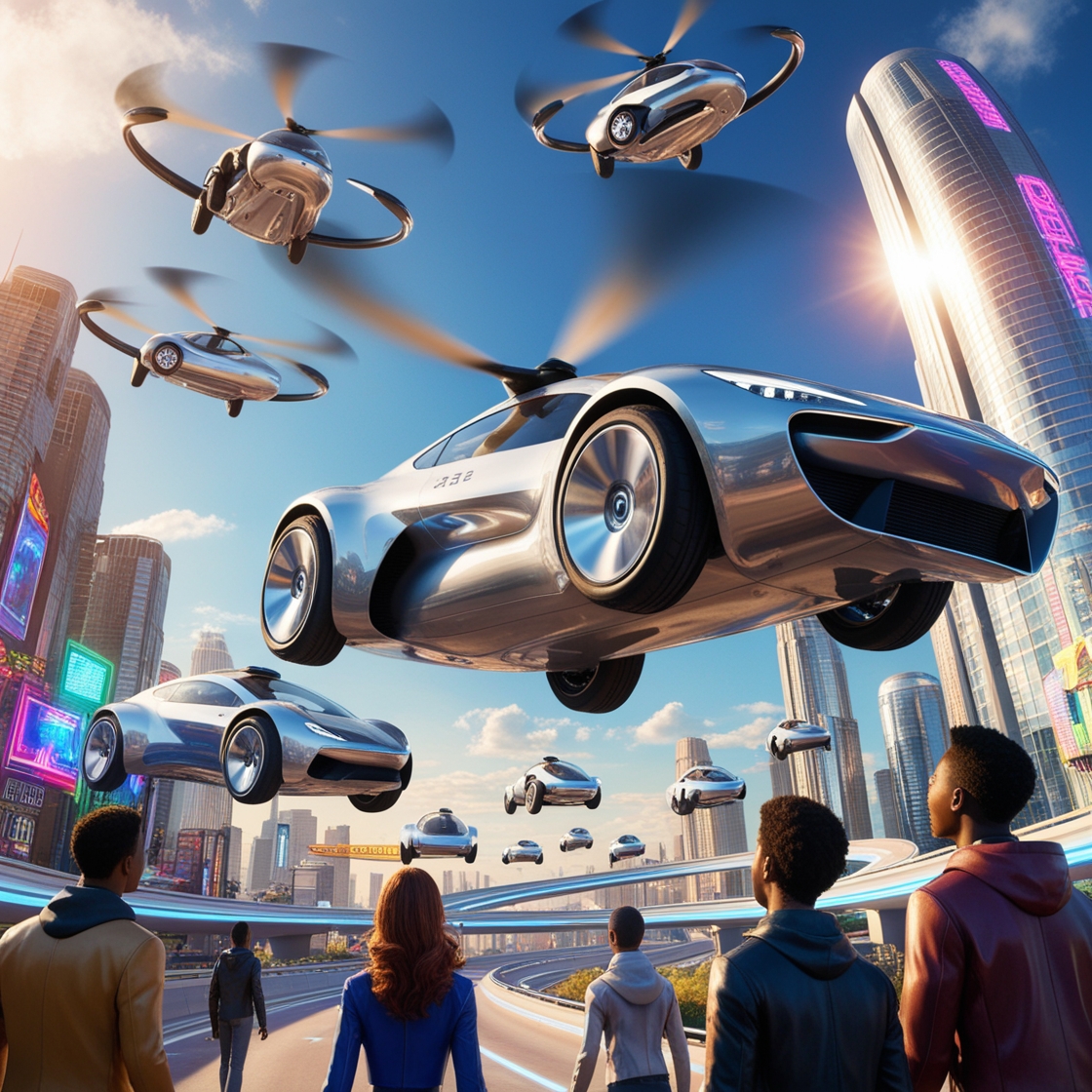Introduction
Imagine a world where traffic jams are a thing of the past, and your daily commute involves soaring over the city. Flying cars, once a staple of science fiction, are rapidly becoming a potential reality. With advancements in technology and growing urban challenges, personal air mobility could revolutionize the way we travel.
The History of Flying Cars
Early Concepts and Attempts
The dream of flying cars dates back to the early 20th century. Visionaries like Henry Ford experimented with early prototypes, such as the “Ford Flivver,” which, although unsuccessful, paved the way for future innovation.
Key Milestones in Flying Car Development
From the AVE Mizar in the 1970s to recent VTOL prototypes, flying cars have undergone significant evolution. Modern designs now incorporate cutting-edge technology to address the limitations of earlier models.
What Are Flying Cars?
Definition and Core Features
Flying cars are hybrid vehicles capable of driving on roads and flying in the air. They combine elements of traditional automobiles and aircraft, offering the flexibility of dual modes of transport.
Difference Between Flying Cars and Traditional Aircraft
Unlike airplanes, flying cars are designed for short distances and urban air mobility. Their compact size and VTOL capabilities make them ideal for congested cities.
The Technology Behind Flying Cars
Vertical Take-Off and Landing (VTOL) Systems
VTOL technology allows flying cars to take off and land vertically, eliminating the need for long runways. This innovation is crucial for urban environments.
Advanced Materials and Lightweight Designs
Lightweight composites reduce energy consumption and enhance flight efficiency, making these vehicles more sustainable.
Integration of Artificial Intelligence and Autonomous Systems
AI plays a significant role in navigation, ensuring safe and efficient operation in complex airspaces. Autonomous flying cars may soon become the norm.
Benefits of Flying Cars
Solving Urban Congestion
Flying cars could significantly reduce traffic, freeing up road space and making urban areas more livable.
Faster Commutes and Improved Efficiency
With the ability to bypass road traffic, flying cars promise faster travel times, improving productivity and convenience.
Reduced Environmental Impact with Electric Propulsion
Most flying car designs rely on electric propulsion, offering a greener alternative to traditional vehicles.
Challenges and Concerns
Safety Regulations and Air Traffic Management
Developing robust systems to manage flying cars in busy airspaces is critical to avoid accidents.
Energy Efficiency and Battery Technology Limitations
Current battery technology needs improvement to support longer flight times and heavier loads.
High Cost of Development and Production
Flying cars are expensive to produce, raising questions about their affordability for the average consumer.
Major Players in the Flying Car Industry
Leading companies like Terrafugia, Joby Aviation, and AeroMobil are spearheading the development of flying cars. Their prototypes showcase innovative designs and promising capabilities.
The Role of Governments and Policies
Governments worldwide are exploring regulatory frameworks to ensure the safe and efficient integration of flying cars into airspaces. Incentives for innovation and infrastructure development are also on the rise.
Public Perception of Flying Cars
While many are excited about the possibilities, some remain skeptical about safety, affordability, and practicality. Building public trust is essential for widespread adoption.
Real-World Applications of Flying Cars
Flying cars could be a game-changer in various sectors, from emergency response to tourism. Imagine reaching a remote destination or delivering critical medical supplies in record time.
Environmental Considerations
Flying cars powered by renewable energy could drastically reduce greenhouse gas emissions. However, managing noise pollution and sustainable material sourcing remains a challenge.
The Future of Urban Planning with Flying Cars
As flying cars become a reality, urban planners may redesign cities to accommodate air travel, creating air corridors and reducing reliance on traditional roadways.
Timeline for Adoption
Experts predict that while flying cars are in their infancy, commercial availability could happen within the next 10 to 15 years, driven by technological advancements and regulatory progress.
How Close Are We to Making Flying Cars a Reality?
Technological breakthroughs are bringing flying cars closer to reality, but challenges like infrastructure development and public acceptance must be addressed first.
Conclusion
Flying cars represent a transformative leap in personal mobility. While there are hurdles to overcome, their potential to reshape transportation, reduce congestion, and create greener cities is undeniable. The sky is no longer the limit—it’s the next frontier.
FAQs
- What are flying cars, and how do they work?
Flying cars are hybrid vehicles capable of operating on roads and in the air, often using VTOL technology and electric propulsion. - Are flying cars safe for public use?
Safety measures and regulations are being developed to ensure flying cars are as safe as possible. - When can we expect flying cars to be commercially available?
Experts estimate flying cars could become commercially available within the next 10-15 years. - Will flying cars replace traditional cars?
While they may complement traditional cars, flying cars are unlikely to completely replace them due to cost and specific use cases. - How will flying cars impact the environment?
With electric propulsion and renewable energy integration, flying cars could reduce carbon emissions, but noise and material sustainability are concerns.
